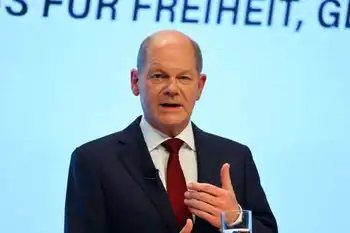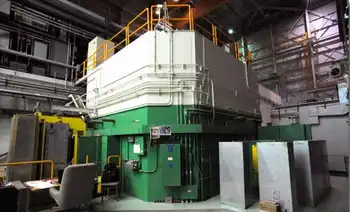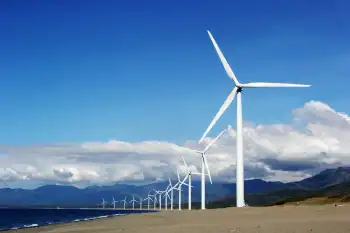Solar, wind projects vie for stimulus funds
By Associated Press
Arc Flash Training CSA Z462 - Electrical Safety Essentials
Our customized live online or in‑person group training can be delivered to your staff at your location.

- Live Online
- 6 hours Instructor-led
- Group Training Available
"We looked at a few sites with high power demand and good exposure to the sun," Williams said of the projects, with a combined price tag of nearly $1.2 million. "We are trying to get the word out that Belchertown is serious about going green."
Williams isn't alone.
Wish lists submitted by cities, towns and state agencies for a share of Massachusetts's federal stimulus funds include hundreds of renewable energy projects, from a multi-community push to place solar panels on the roofs of public buildings across Cape Cod to a major wind farm in the Berkshires.
Interspersed are dozens of smaller projects, from micro wind turbines to solar panels on schools to a "biomass boiler" at the University of Massachusetts-Dartmouth that relies on biomass like wood chips instead of oil or gas.
There's even a proposal to put solar panels on portions of the Statehouse.
Under the $787 billion federal stimulus plan signed by President Obama, Massachusetts is expected to receive $1-2 billion for infrastructure projects. That means only a tiny fraction of wish list projects will see any money.
Still, Gov. Deval Patrick is hoping the funds will help jumpstart his goal of dramatically increasing Massachusetts' production of renewable energy.
For solar energy, that goal is the ability to generate 250 megawatts of energy from solar panels by the year 2017. There are now about 7 megawatts of solar panels installed across Massachusetts.
The goal for wind power is even more dramatic.
The state has just nine major wind turbines pumping out about 7 megawatts of power. By 2020, Patrick wants the state to be producing 2,000 megawatts of wind energy. While the goal is ambitious, it may be attainable. The proposal by Cape Wind Associates to build 130 windmills across 25 miles of federal waters in Nantucket Sound, for instance, would generate up to 420 megawatts of power.
State Environmental Affairs Secretary Ian Bowles said the stimulus dollars will help push the state closer to its goals.
"We see the stimulus as providing a very important impetus to maintain and expand the momentum we have built for renewable energy over the last two years," Bowles said.
The Cape Light Compact is one of those groups hoping to turn stimulus dollars into renewable energy.
The group ultimately wants to generate 14 megawatts of energy by installing solar panels on public buildings up and down the Cape, from fire stations and town halls to schools and DPW buildings.
The group has requested $10 million in stimulus funds — enough to install 3 megawatts worth of solar panels on more than a dozen sites according to Maggie Downey, the group's administrator. That would produce enough electricity to cover about 20 percent of the entire municipal load on the Cape, she said.
Downey said the project has an added economic benefit for the state. Not only will it boost production of clean energy, but the panels will be purchased from a local company — Evergreen Solar based in Devens.
"Not only are we hiring local people to install these, but for Massachusetts we get a double-bang because we help the local manufacturers too," she said.
The Berkshire Wind Power Cooperative Corp. has an even more ambitious project — the creation of a 10-turbine wind power farm on Brodie Mountain in Hancock, Mass.
The group, formed by 14 municipal power companies and the Massachusetts Municipal Wholesale Electric Company, is on the verge of signing the contract to purchase the turbines and will resume construction on the foundations for the turbines in the spring. It's hoping for $47 million in stimulus funds. When completed, the project is expected to produce 15 megawatts of power.
"It's the kind of initiative that's needed to advance the development of renewable energy projects in Massachusetts," said David Tuohey, spokesman for Massachusetts Municipal Wholesale Electric Company. "We are definitely shovel-ready."
Being "shovel-ready" — defined as able to begin construction within 180-days — is critical. The stimulus money is intended for projects that can quickly help boost the economy.











